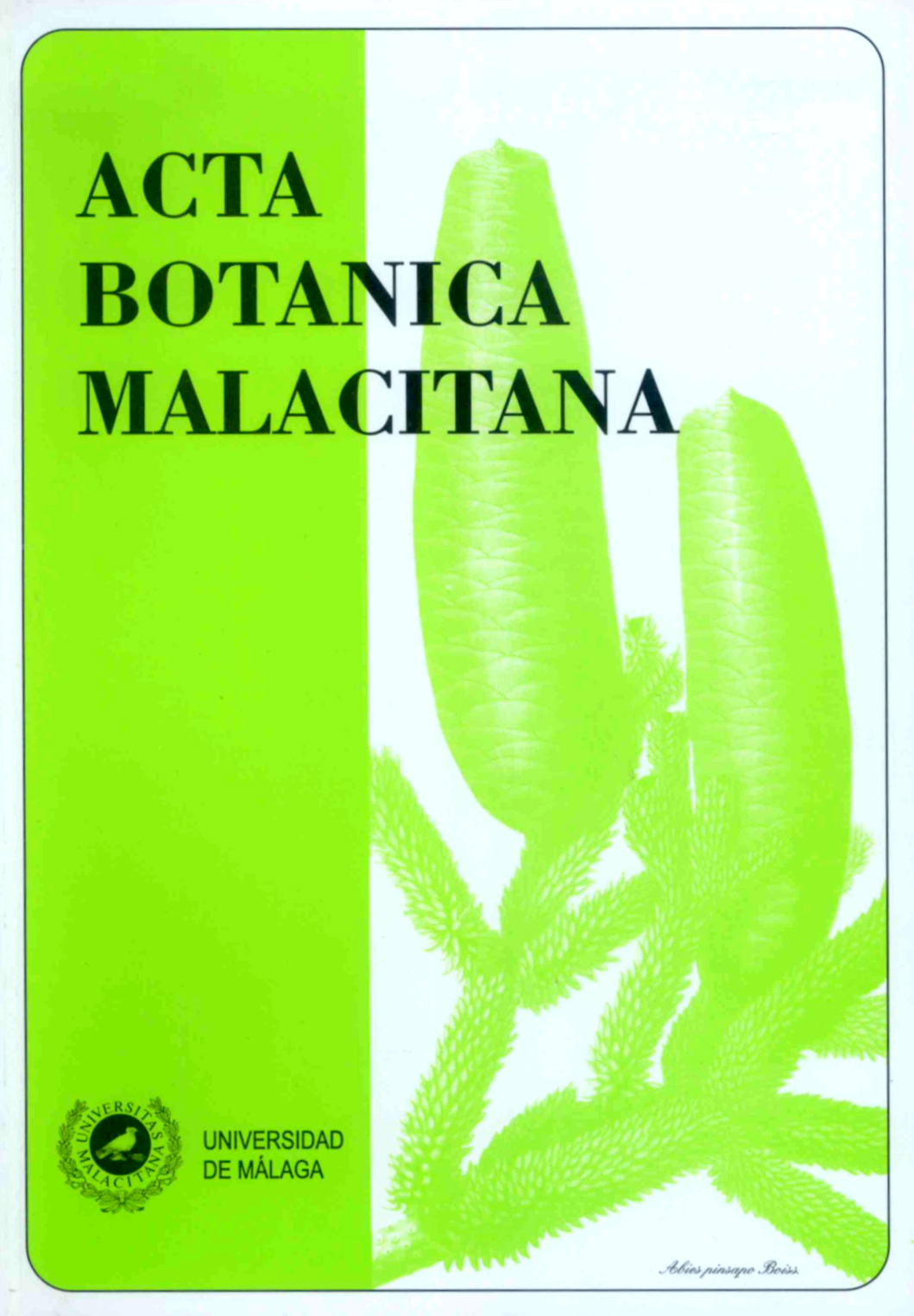Aeropalinología de la ciudad de Yerba Buena, provincia de Tucumán (Argentina). Aeropalinology of Yerba Buena city, province of Tucumán (Argentina)
DOI:
https://doi.org/10.24310/abm.v35i0.2870Abstract
Español. Durante los años 1999 - 2002 se llevó a cabo la primera caracterización aerobiológica de la ciudad de Yerba Buena. El muestreo atmosférico se realizó con un captador gravimétrico de tipo Durham. El análisis de las muestras permitió la identificación de 46 tipos polínicos. Los granos de polen más relevantes en el muestreo son de especies cultivadas como Cupressaceae, Morus sp., Broussonetia sp., Fraxinus sp., Liquidambar sp., Salix sp. y Pinus sp. Desde julio a octubre se obtuvo el mayor registro de polen atmosférico con el 70,84 % anual, con una predominancia de granos de polen de especies arbóreas, el 25,05 % de noviembre a abril con un aporte principalmente de granos de polen de especies herbáceas y el 3,57 % de mayo a junio sin contribuciones dominantes de algún tipo polínico. Se elaboró un calendario polínico basado en los 17 tipos de polen de mayor registro atmosférico y se lo comparó con calendarios polínicos obtenidos en ciudades del país. La floración en las Sierra del San Javier en Tucumán, es marcadamente estacional con una acumulación de más de 70% de las especies que florecen en el período primaveral. El muestreo continuado a lo largo de 3 años ha permitido observar que las variaciones polínicas estacionales de la atmósfera de la ciudad de Yerba Buena se hallan en relación con los factores fenológicos y meteorológicos propios de cada año.
English. The first aerobiologic characterization of Yerba Buena city in Tucumán (Argentina) was carried out for the period 1999-2002 using a Durham gravimetric spore trap. The analysis of samples allowed the identification of 46 pollen types. The most outstanding pollen grains in these samples came from cultivated species such as Cupressaceae, Morus sp., Broussonetia sp., Fraxinus sp., Liquidambar sp., Salix sp.and Pinus sp. From July to October the largest atmospheric pollen records were obtained with 70,84% in arboreal species predominantly. From November to April, an important contribution of 25,05% in herbaceous species mainly, and with a 3,57% from May to June without observing predominant contribution of any pollen type. A pollen calendar based on the most frequent 17 pollen types, containing the largest atmospheric records, was elaborated. We compared the pollen calendar obtained with those of other cities in the country. Flowering in the Sierra San Javier at Tucumán is markedly seasonal with an accumulation of over 70% of the species that bloom in the spring period. Continuous sampling during 3 years has revealed that the seasonal pollen variation in the atmosphere of the city of Yerba Buena, is in connection with the phenological and meteorological factors characteristic of every year.
Downloads
Metrics
Downloads
Published
How to Cite
Issue
Section
License
All information related to the licensing of published works in Acta Botanica Malacitana and copyright can be found in our Editorial Policy.







1.png)
